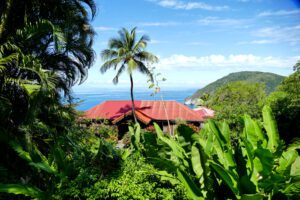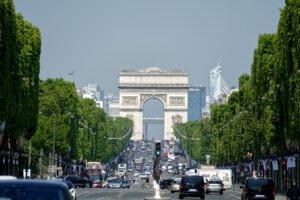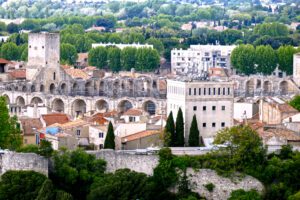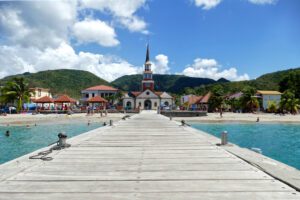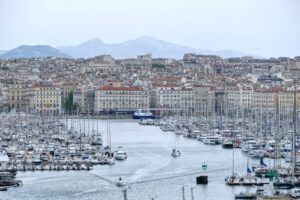Marseille is a port city that has been around for a while. In fact, it is the oldest city in France and has always been a major hub for immigration and sea trade. Consequently, its heart is the Vieux-Port where fishmongers sell their catch fresh off the boat to this date.
For me, Marseille has always been a myth, a place of longing. Marseille awakens wanderlust, yet at the same time, it makes you homesick.
Marseille is a city full of contrasts and contradictions.
In this post, I show you what not to miss in two days in Marseille.
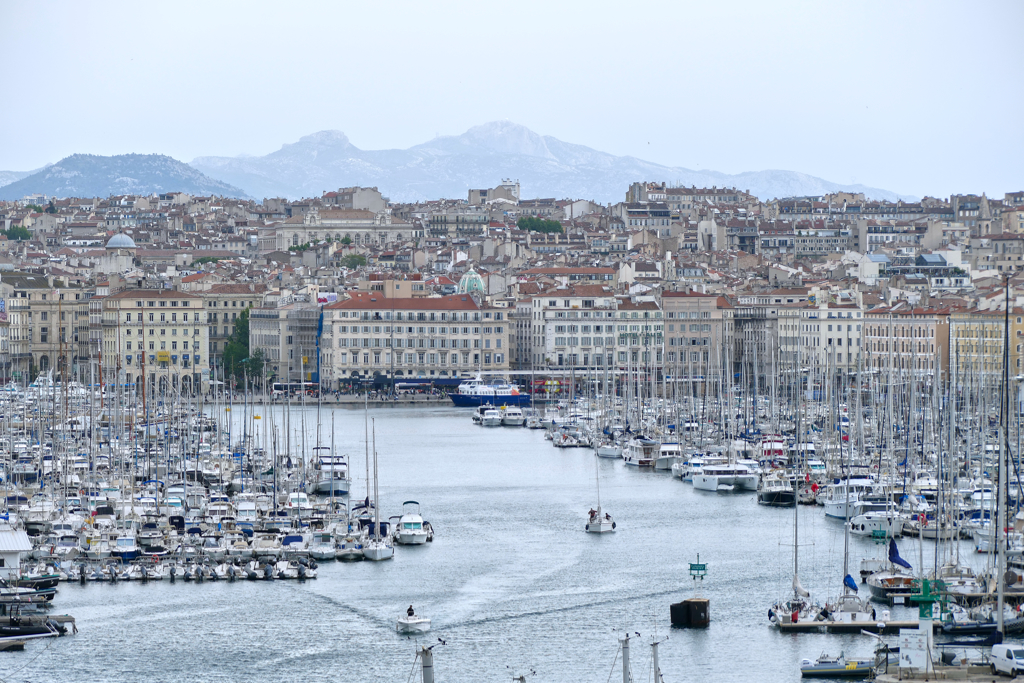
Visiting the Belly of France
Marseille is the oldest city in France. As France’s gateway to the Mediterranean, it is characterized by immigrants like hardly any other French metropolis. In the period around 1900, these were mainly Italians. After the Second World War, they were joined by Algerian-French people of European descent and residents of the former French colonies. If the earliest immigration movements are taken into account, 90 percent of the population has ancestors who did not come from France.
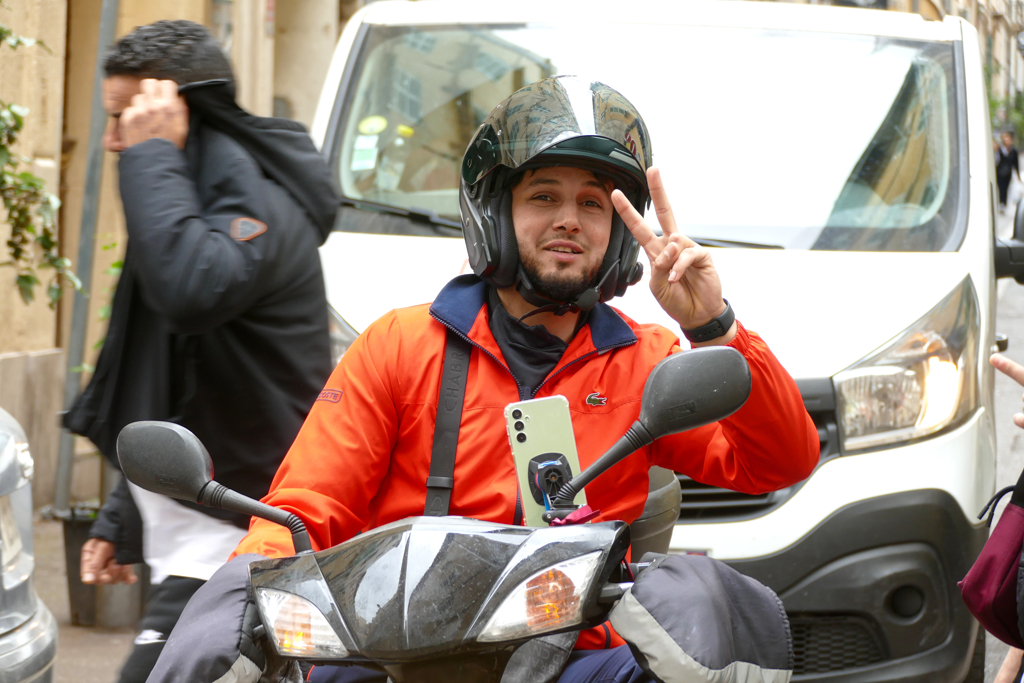
A wistful, melancholic air blows around the city. When strolling through the old harbor where fish are still sold in the market on the quays, you can still feel the rough charm of the hard-working common people with their loud voices, calloused hands, and hearts of gold.
I do not want to hide the fact that Marseille has social and economic difficulties. Yet, you will see that the city of Marseille offers its visitors a verisimilitude that is sometimes missing for instance in globalized Paris. Also, the sociable attitude of locals and the multifarious cultural heritage make a visit to Marseille a unique experience.
Visiting a Myth
Marseille – it’s strange that this was my first trip to this rough city on the southern shores of France. The city has been at the crossroads of fishmongering, immigration, love, and lavender. As a matter of fact, I’ve had a soft spot for Marseille in my heart for decades: First, for Marcel Pagnol’s tender, at times melancholic, at times hilarious counts set in the Provence around Marseille. Later, I dived into the melancholic police novels by Jean Claude Izzo set in Marseille’s community of Maghrebian migrants.

Maybe I was hesitant to visit Marseille as I was afraid the reality couldn’t keep up with all those moving stories I’ve been carrying in my heart for so long.
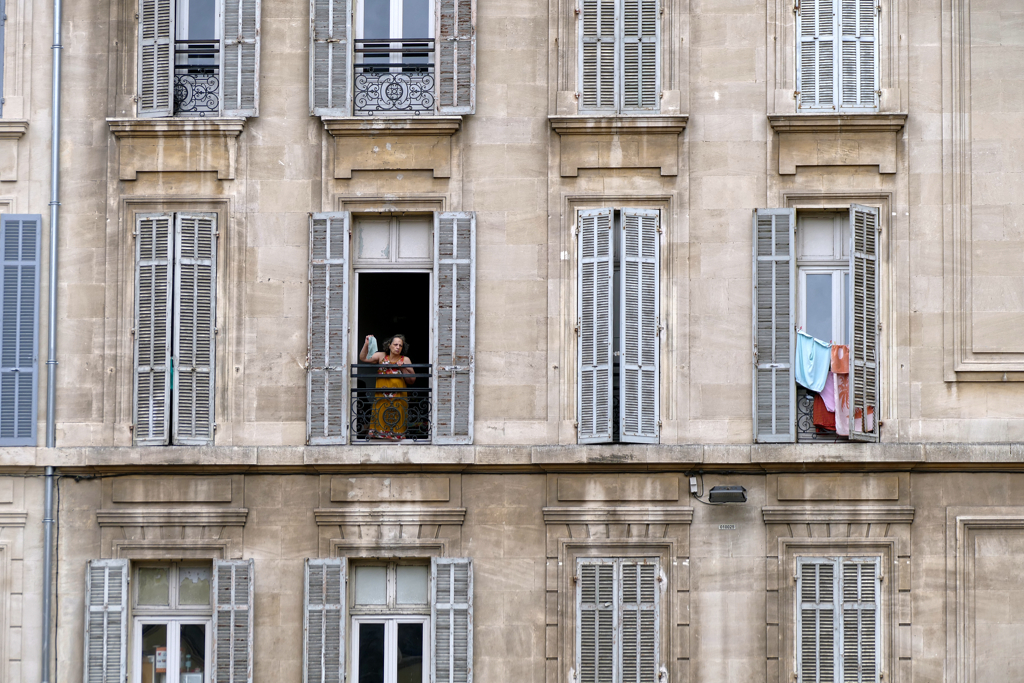
So, did it disappoint?
By no means!
The First Cut is the Deepest
The path from the station to the dusty arterial road was lined with people from the Maghreb and sub-Saharan Africa. They stood and squatted between piles of worn-out clothing that probably wouldn’t even have been presentable when they were still new. Now they were basically trash. Next to the pile, a woman had packed rice into about a dozen small packages and offered it for sale. In between was all sorts of dirt and rubbish. The discarded textiles hardly differed from those offered for sale. Everything screamed poverty, misery, hopelessness. From Marseille’s main train station Saint Charles, it obviously takes around 10 minutes by subway, and you find yourself in the slums of Algiers and Kinshasa.
And this exact trip was my first subway ride in Marseille.
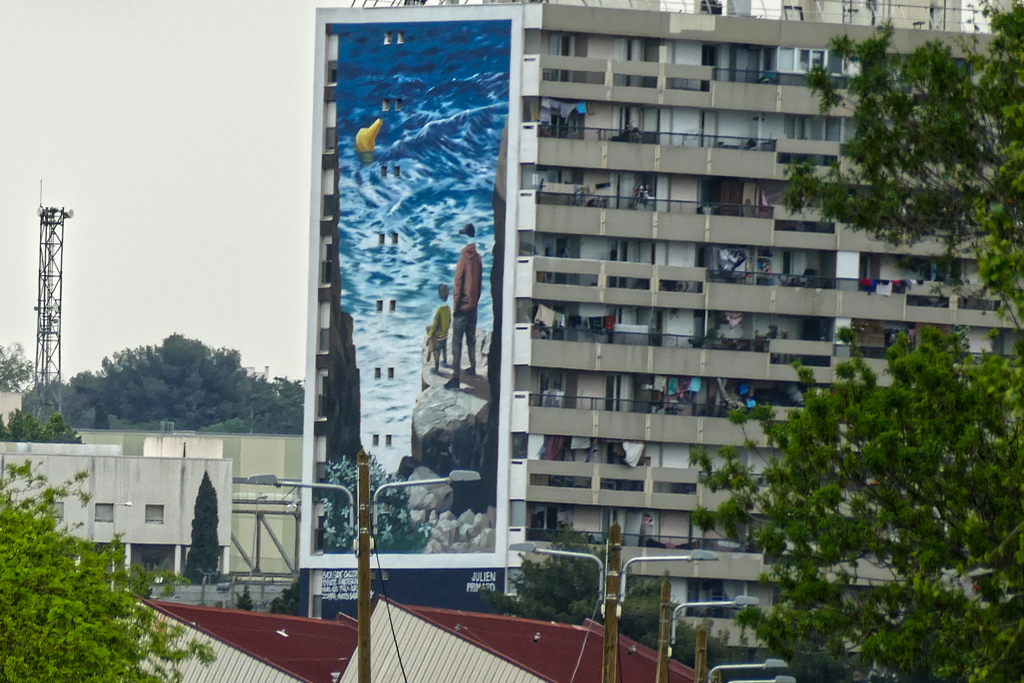
I don’t want to encourage anyone to be unreasonable, but my experience is that as an elderly woman, my age seems to protect me. Yes, around the huge market hall where almost exclusively men traded – both permitted and clearly not really legal – was certainly not a comfortable place. But I know the phenomenon that the appearance of such a prominent person, who nevertheless seems to have a goal, initially confuses the locals.
Who Are You?
What does the woman who boldly refuses the fake Marlboros on offer want in this area? She marches purposefully towards the back of the property. A few wrecked cars are standing around with men in oil-smeared clothes working on them. This strange woman doesn’t lower her gaze, the curious, appraising looks cannot unsettle her. When testingly greeted, she just replies politely Bonjour or even Sabah Al Hair and keeps going.
I’m telling you, my alien-like status offers protection.
At least on a Tuesday morning.
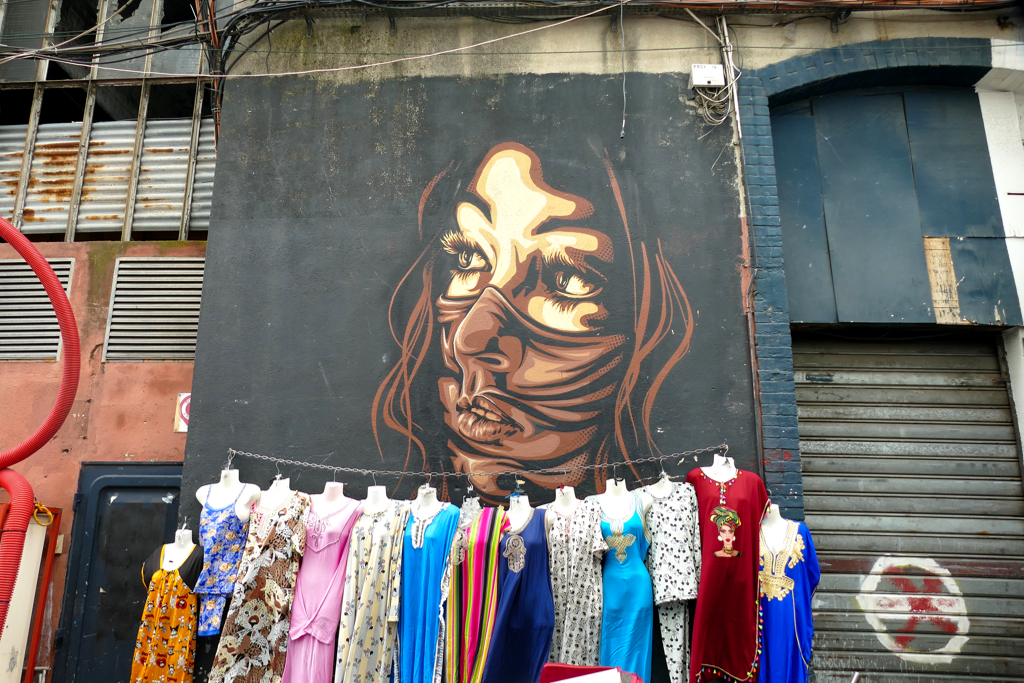
Would I wander around Gèze after dark? Certainly not!
Would I encourage other visitors to photograph street art in Gèze? Probably not.
Unless you speak French and preferably Arabic and determination is not just a pose for you, but your second nature.
Otherwise, just enjoy the pictures I took on my tour de force to Marseilles’s neighborhood of Gèze in my post The Best Street Art in Marseille.
What Not to Miss
With a bit less than 900,000 inhabitants, Marseille is France’s second-largest city. That is remarkable. Nevertheless, French centralism always tempts us to undervalue all cities that are not Paris. That’s what happened to me with Marseille. As it turned out, two days was far too short for a city so culturally rich and diverse.

Realistically, I would plan at least three, preferably five days for Marseille. Then, in addition to the activities presented here, you can also visit some of the beautiful museums, climb up to the Basilique Notre-Dame de la Garde, and spend a relaxing day on the beach.
As I said, I had two days in Marseille and that was okay for a first good impression.
However, I’ll be back for the rest soon, I promise!
North of the Basin of the Vieux Port
The Vieux Port, hence, Marseille’s old harbor, was created in ancient times. It has always been the city’s historical and cultural center. Until the mid-19th century, the port was also the hub of sea trade in the Mediterranean and for commerce with the French colonies. As the industrial port has moved more and more northward to what is now the so-called Europort, the Vieux Port is now only an anchorage for smaller yachts. Also, there are still a few fishing boats as a fish market takes place every morning on the Quai de la Fraternité.
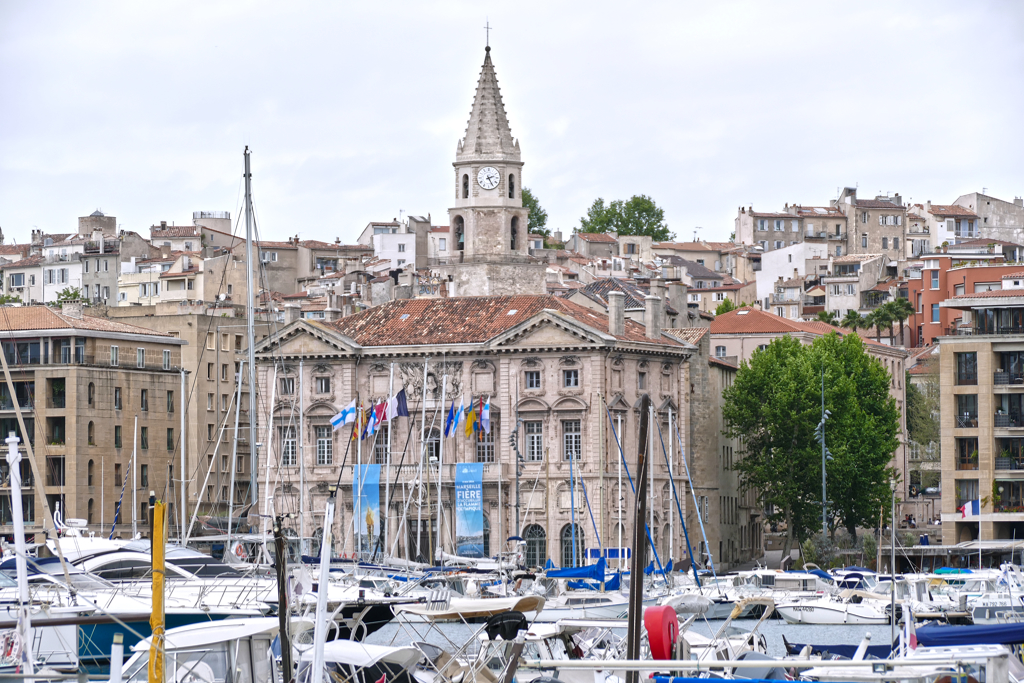
The promenades around the harbor basin are the city’s most touristy and also least let’s say, intimidating area. Three boulevards merge into each other and surround the harbor basin in the shape of a horseshoe, which opens westward towards the sea.
Around the square east of the basin is a busy shopping district with stores, restaurants, and various touristy services. Actually, I could just sit here all day and watch the craze around me, but I’ll postpone that to when I retire.
Today, I finally want to explore this exciting city!
L’Ombrière de Norman Foster
Apart from many companies offering harbor tours and other touristy services, one of the most interesting attractions at the Quai des Belges is the so-called L’Ombrière.
None other than Sir Norman Foster, in collaboration with the city planner Michel Desvigne, designed the huge shade-supplying mirror. It was installed in 2013 when Marseille commissioned various projects as it then was the European Capital of Culture.
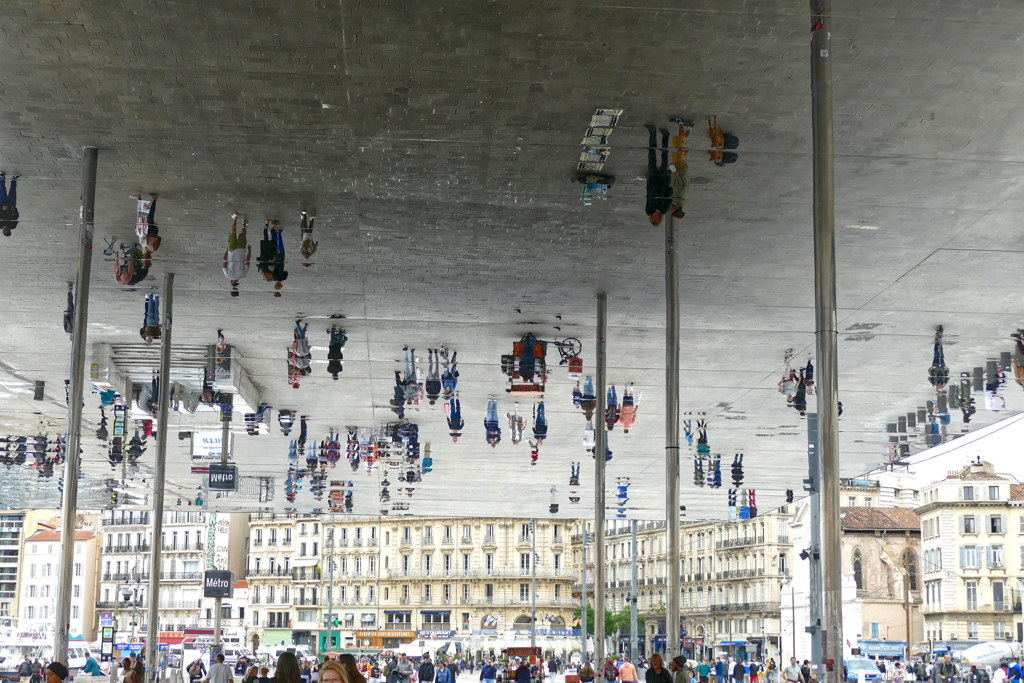
However, the huge L’Ombrière is around 1,000 square meters in size and practically turns the world upside down.
Hôtel de Ville
Approximately in the middle of the Quai du Port is the town hall of Marseille. It is a 17th-century building with a lavishly ornate façade designed by Gaspard Puget. Above the main entrance is Marseille’s coat of arms, designed by Puget’s brother Pierre.
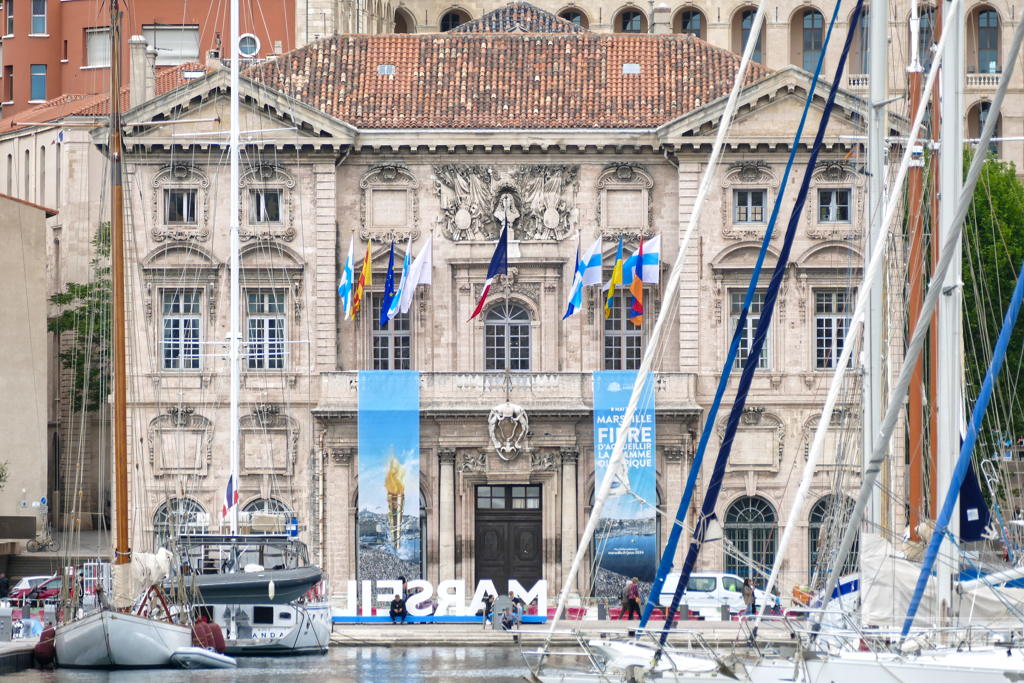
The palace has a unique feature: There are no stairs connecting the ground floor to the first floor! To get to the first floor, you have to enter through the building behind the town hall.
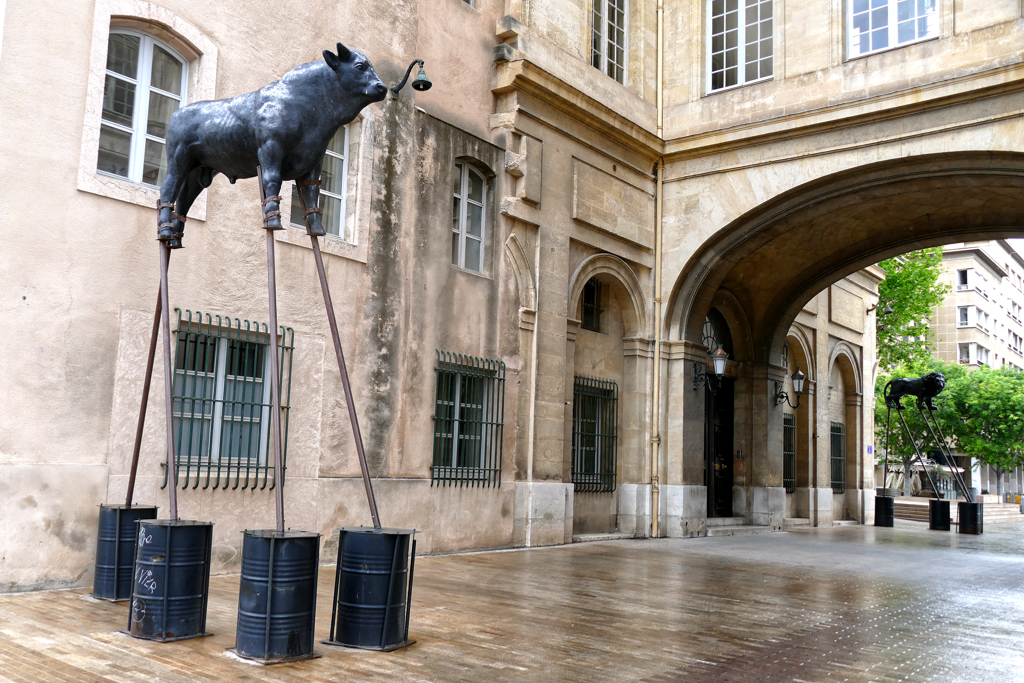
This peculiarity is due to the fact that the ground floor was reserved exclusively for merchants while the nobility had access to the upper floors.
Fort Saint Jean
At the entrance to the Vieux Port, where the harbor basin opens to the Mediterranean, there is an impressive fortress.
Fort Saint-Jean was built under Louis XIV in 1660. It was constructed on a site that previously belonged to the Order of Saint John, hence, the name of the fort. At the same time, Fort Saint Nicolas was built on the opposite side of the harbor.
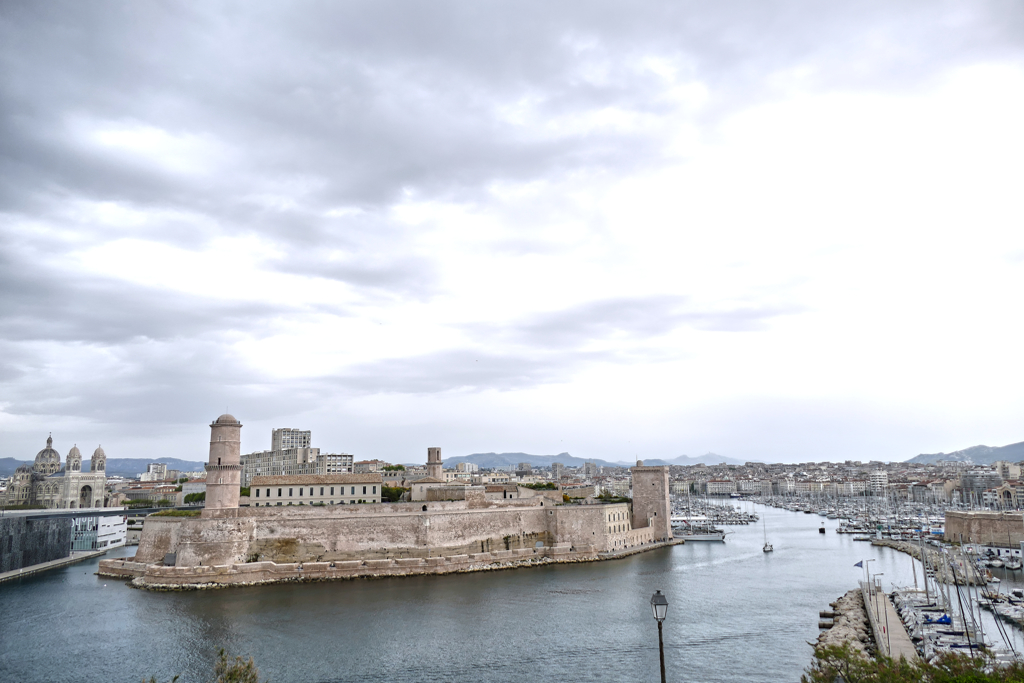
Interestingly, the two fortresses were built in response to a local rebellion against the governor rather than to defend the city. The cannons actually pointed towards the city instead of outwards to the sea.
During the French Revolution in 1790, Fort Saint Jean was occupied by a revolutionary mob who beheaded the commander of the royal garrison after he refused to surrender the citadel. It was then used as a prison. After the fall of Maximilien de Robespierre in 1794, around a hundred Jacobin prisoners were executed in the fortress.
In the 19th and early 20th centuries, the French army used the building as a barracks and hospital.
In Marseille’s legendary year of 2013, Fort Saint Jean became part of the Museum of Civilizations of Europe and the Mediterranean MuCEM. It is connected to the new building by a pedestrian bridge. A second bridge leads to the historic Le Panier district.
MuCEM – Museum of Civilizations of Europe and the Mediterranean
The MuCEM was also opened on the occasion of Marseille’s nomination as European Capital of Culture in 2013. The French architect Rudy Ricciotti designed it in collaboration with his colleague Roland Carta. It is a 15,000 square meter cube encased in a grid shell made of fiber concrete. Visitors can take an outdoor tour between the façade and the concrete network. The construction cost a small something of 190 million euros.
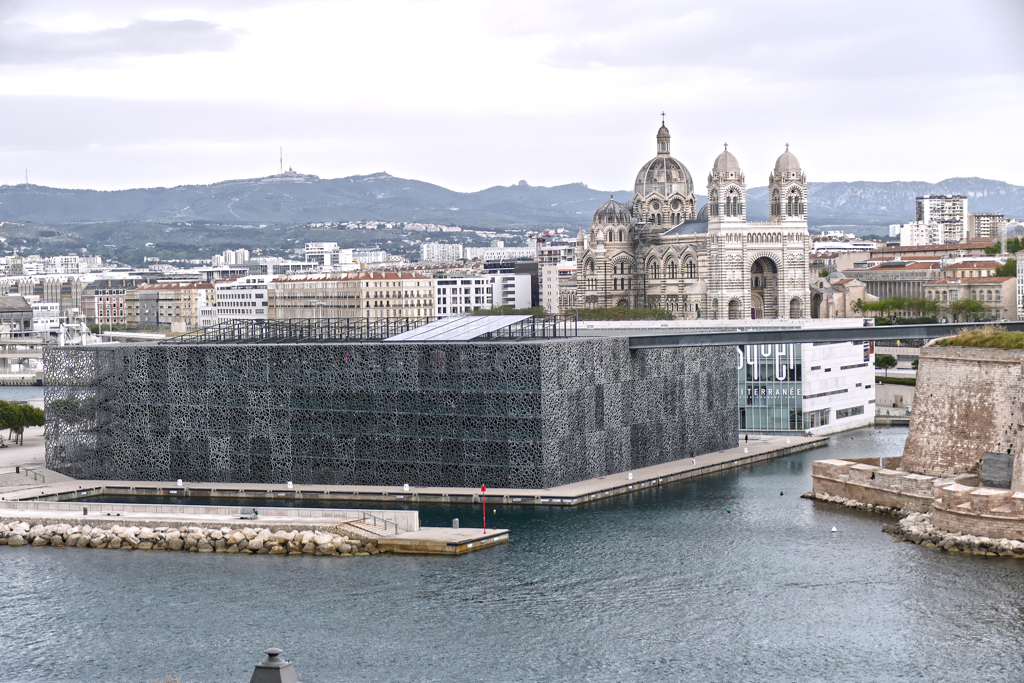
The MuCEM is located on the so-called Esplanade du J4, an artificial peninsula at the foot of the Old Port, and is connected to the historic Fort Saint Jean through a pedestrian bridge.
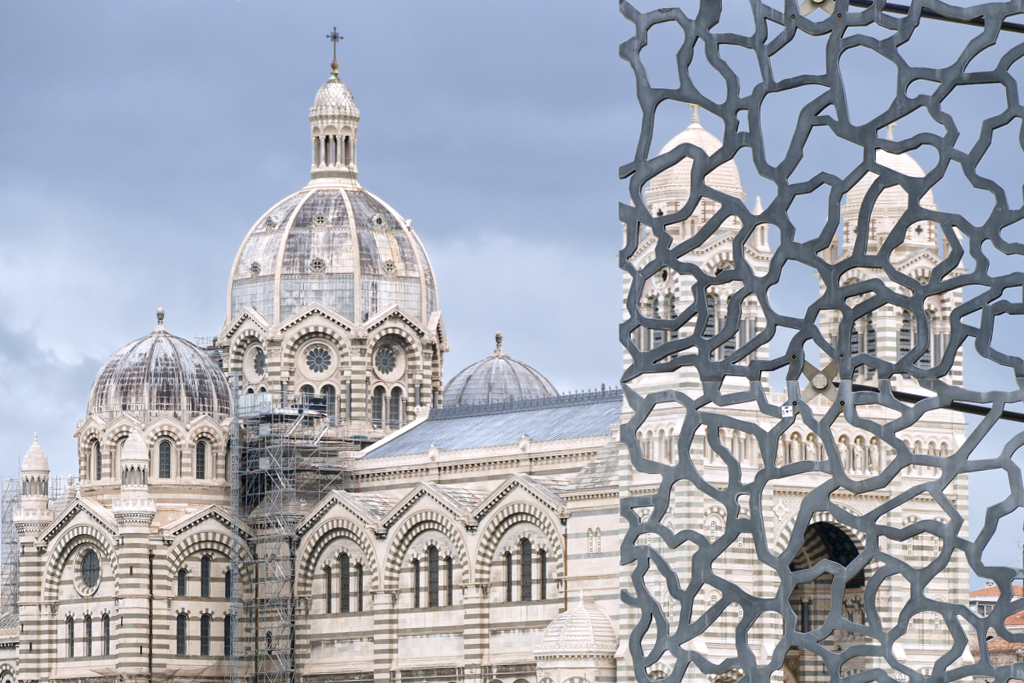
The museum opens Wednesday to Monday at 10:00 a.m. and closes between 6:00 p.m. and 8:00 p.m. depending on the season. A general ticket costs 11 €uros.
Cathédrale de la Major
Somehow in Marseille I couldn’t shake the feeling that two places of worship catch your eye, no matter where you are in Marseille. One is the Marian pilgrimage church Basilique Notre-Dame de la Garde, which stands south of the harbor basin on a 161-meter-high hill. Therefore, the landmark can be seen from afar.

The other is the Cathédrale Sainte-Marie-Majeure de Marseille, usually Cathédrale de la Major. It is just a stone’s throw from the MuCEM and is the episcopal church of the Roman Catholic Archdiocese of Marseille. Léon Vaudoyer and Henri-Jacques Espérandieu designed the church, which was built in the monumental Neo-Romanesque-Byzantine style in 1852. Its size, which is comparable to Saint Peter’s Basilica in Rome, should be worthy of the significance of France’s second-largest city and its most important port. Therefore, none less than Louis-Napoléon Bonaparte laid the founding stone.
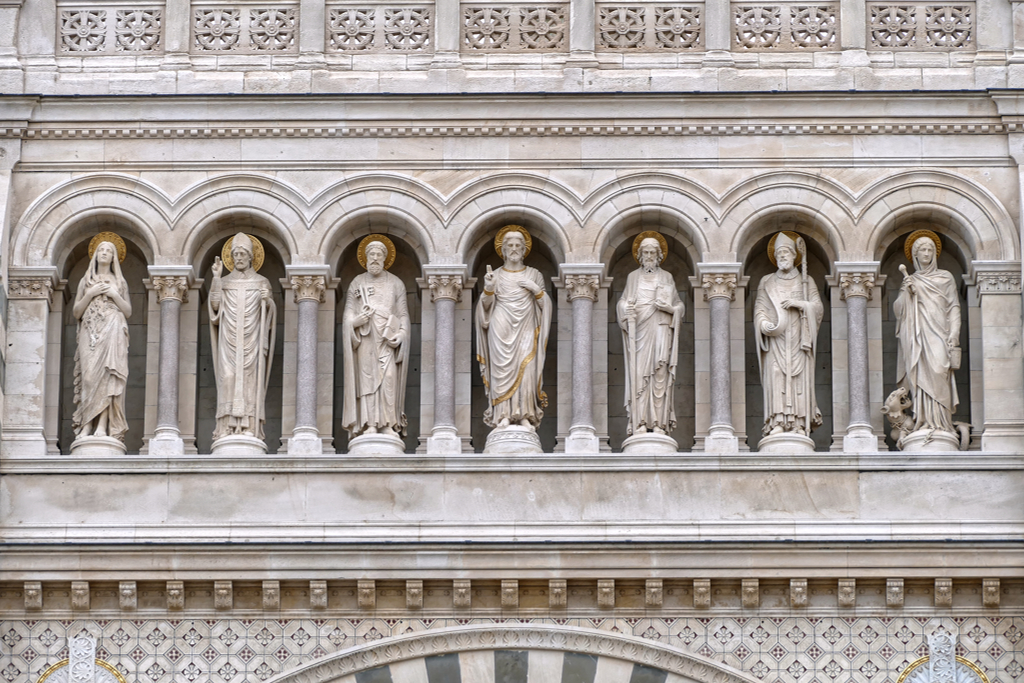
As a matter of fact, it is the only cathedral built in the 19th century as no cathedrals had been built for 200 years!
The Cathédrale de la Major opens every day at 10:00 a.m. From November to March, she closes at 5.30 p.m., from April to October only at 7 p.m. The visit is free of charge.
South of the Basin of the Vieux Port
Le Musée du Savon de Marseille
Savon de Marseille is a type of soap that results from the saponification of a mixture of mostly vegetable oils with soda. The formula of this soap was regulated as early as the 17th century under King Louis XIV. As a matter of fact, the name Savon de Marseille is not a registered designation of origin, but only corresponds to a codified manufacturing process that guarantees a minimum fatty acid content.
In the 19th century, there were about 90 soap factories in the region. The soap was used as a cleanser primarily for the face and body. However, it was also used in the form of flakes as a household cleaner and for washing clothes. Due to the natural ingredients, it was primarily suitable for washing baby laundry. In fact, because the soap keeps clothes moths away and is bactericidal, it contributed to the decline in child mortality in the 19th century.
Nevertheless, from the 1950s onwards, synthetic cleaning products pushed Savon de Marseille out of the market. Today, China and Turkey are the largest producers of Savon de Marseille!
However, the soap remains one of the prices of Marseille. Therefore, its history is celebrated at the Musée du Savon de Marseille where you can learn every little detail about this amazing product and shop for suitable souvenirs, obviously.
The Musée du Savon de Marseille is open every day from 10 a.m. to 6 p.m. The entrance fee is 2.50 €uros and includes a large piece of soap. For 5.50 €uros, however, you also get to see the workshop and can personalize your soap.
Fort Saint Nicolas
While Fort Saint Jean stands in the north, the Saint Nicolas Fortress stands on the southern bank of the harbor basin. The current location behind the Saint-Victor Abbey was chosen as the building site and work began in 1660 during a visit by the king. The construction was completed in four years, which is a record time given the size and type of building.
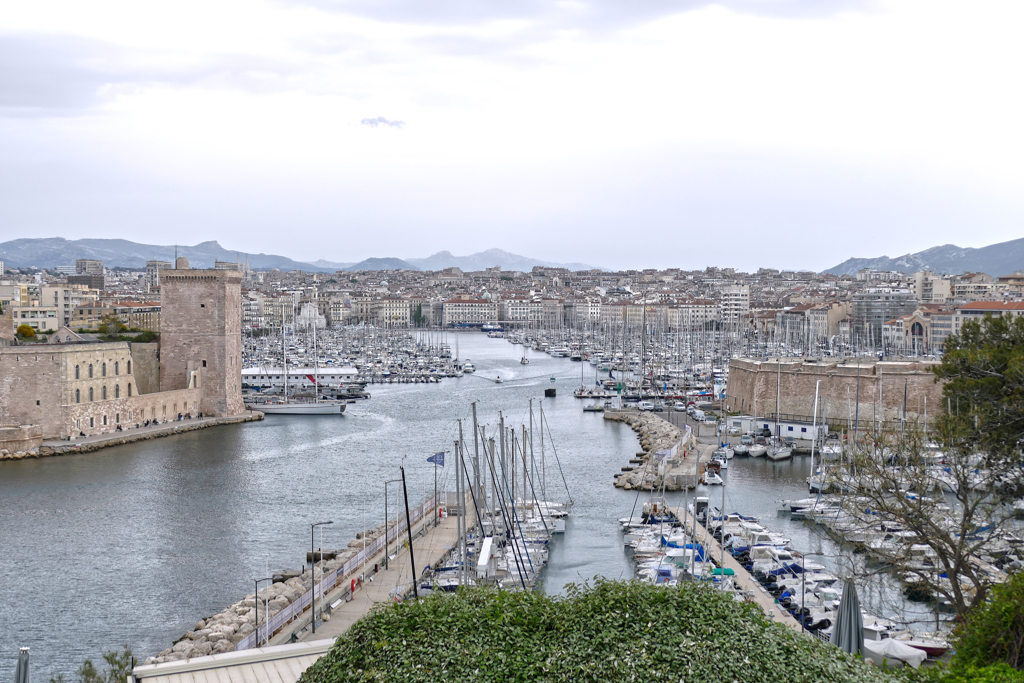
This military building was also not so much used to protect the city from invasions. It speaks for an extremely rebellious spirit when the rulers have to build fortresses to protect themselves against the Marseilles and their rebellious desire for freedom. And in fact, during the French Revolution, the people began to destroy the fortress of Saint-Nicolas because they perceived the fortress as threatening.
Today the fortress consists of two parts since it was divided by the route of the new Boulevard Charles Livon in 1860.
The part of Fort Ganteaume adjacent to the sea houses the military circle and the officers’ mess. The landside higher part called Fort d’Entrecasteaux can be visited.
A good opportunity to enjoy the wonderful views of the port and the city of Marseille from a different angle.
However, the Citadelle de Marseille can only be visited on guided tours which are available in French and in English. They cost 12 €uros and you have to choose and pre-book them on their website.
Parc Émile Duclaux
The Basilique Notre-Dame de la Garde, the Fort Saint Nicolas, yes, that’s all fine and dandy. Yet, I would argue that you have the best views of the Vieux Port and the old town from the Parc Émile Duclaux, also known as Parc du Pharo.
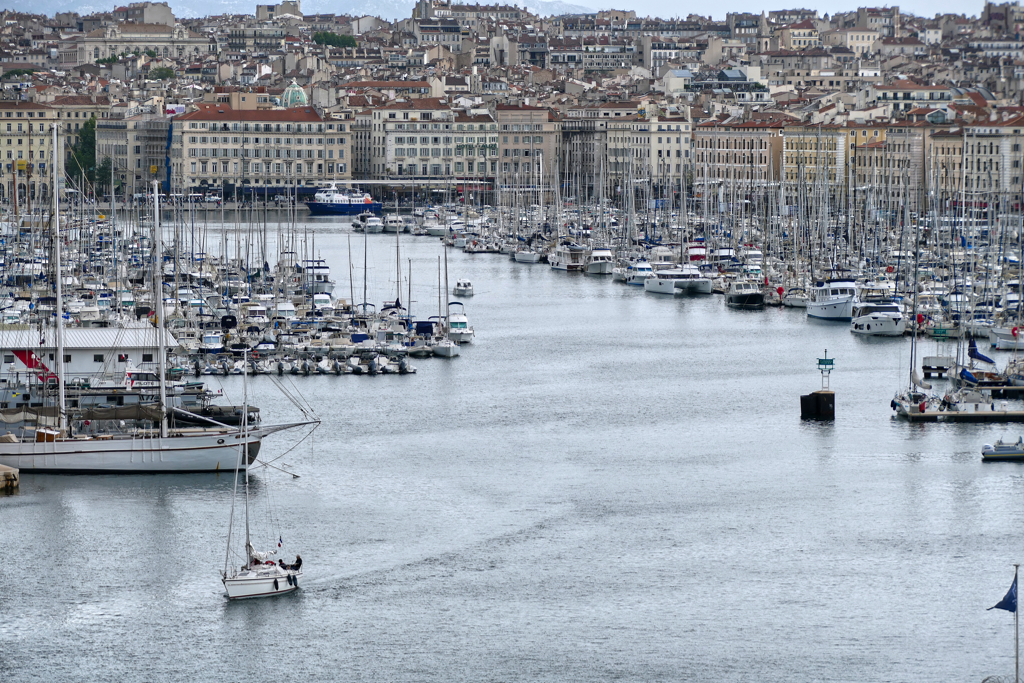
This garden extends over almost six hectares and, standing directly opposite the harbor basin, you have a panoramic view from the Joliette district with the cathedral, the MuCEM, and Fort Saint Jean across the harbor to Fort Saint Nicolas and the basilica Notre-Dame de la Garde. I’m telling you, it doesn’t get any better. Of course, it is also a great place to enjoy the sunset.
If I had to choose a favorite spot in Marseille, it would be Parc Émile Duclaux.

The park is open daily from 7 a.m. to 9 p.m. and there is no entrance fee. Another big advantage of this garden is that although you have a great view from above, you only have to climb a very gentle slope to the highest viewpoint as you enter from the street side.
Le Panier
Le Panier – what can I say? Of course, Le Panier is gorgeous. Practically the Montmartre of Marseille. Equally iconic. Just as historical. But also just as hip and as crowded. The fate of every picturesque neighborhood in our era of over-tourism. But yes, still absolutely worth seeing, even if it is certainly no longer authentic. Too many shops in Le Panier sell relatively high-priced fashion and handicrafts, which no local needs or can even afford.
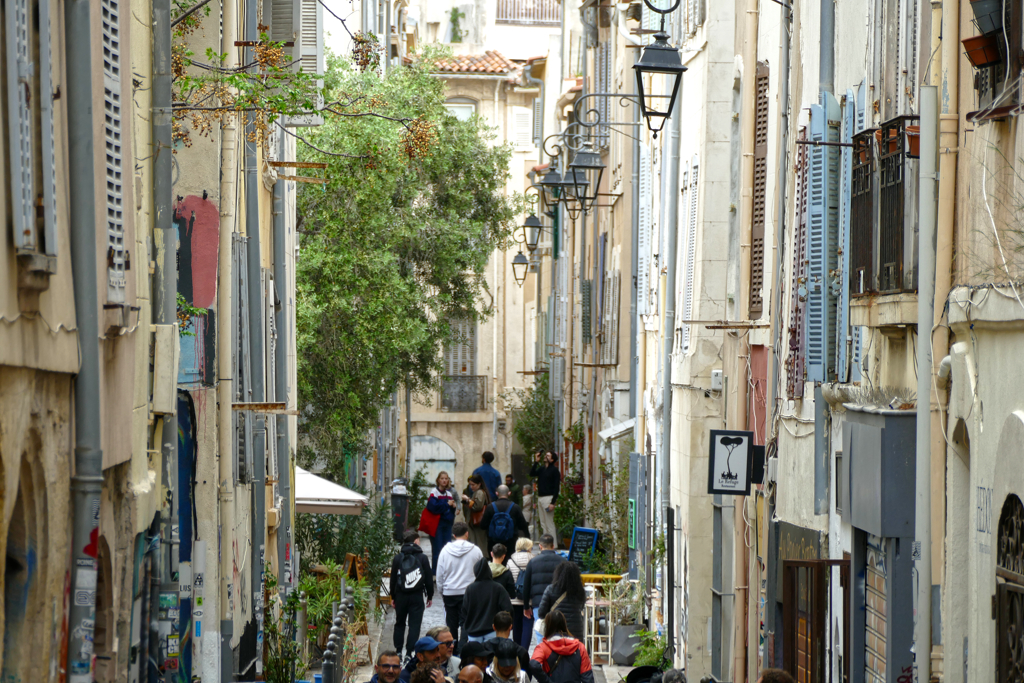
The Panier district is considered to be the cradle of Marseille, which was founded by the Greek Phocaeans in the 6th century BC. It grew between the waterfront and the Saint-Laurent hill into a densely populated neighborhood with narrow streets, steep stairs, and crammed houses.
The proximity to the port meant that the district was heavily influenced by migration. Migrants from Italy at the end of the 19th century were followed by people from Corsica and Spain in the interwar period.
Since the end of the 19th century, the southern part of the Panier district was considered an unsafe no-go area.
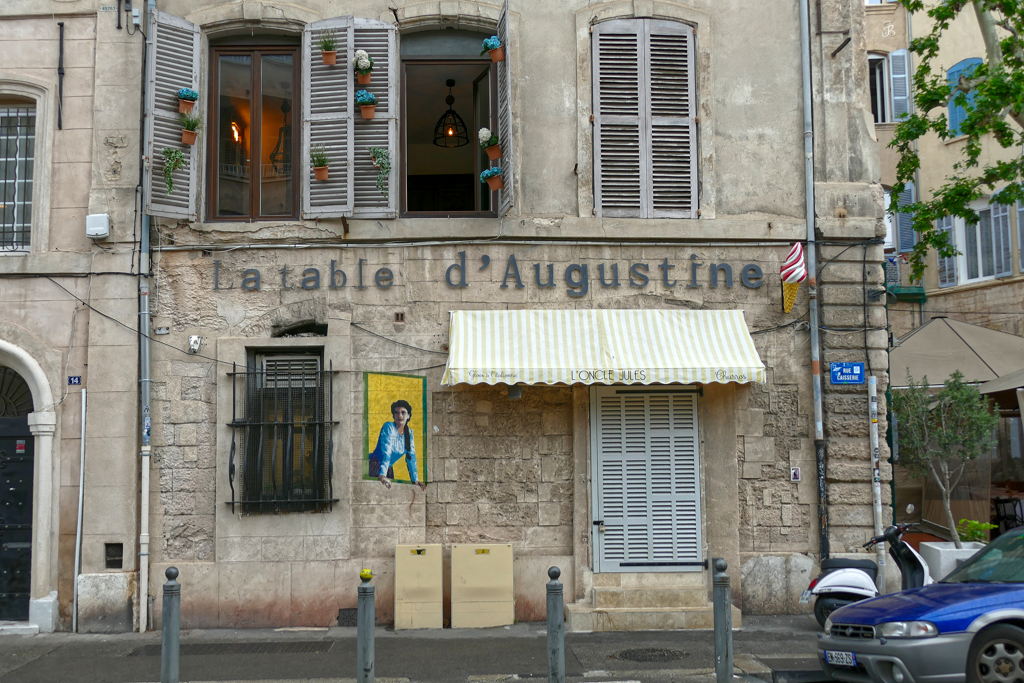
During WWII, the German military, which had occupied Marseille since 1942, considered the harbor area a hotbed of crime but also resistance. Hence, in January 1943, 20,000 people were evacuated from the neighborhood, and one month later, 1,500 buildings were mercilessly blown up.
They were rebuilt only in the 1950s.
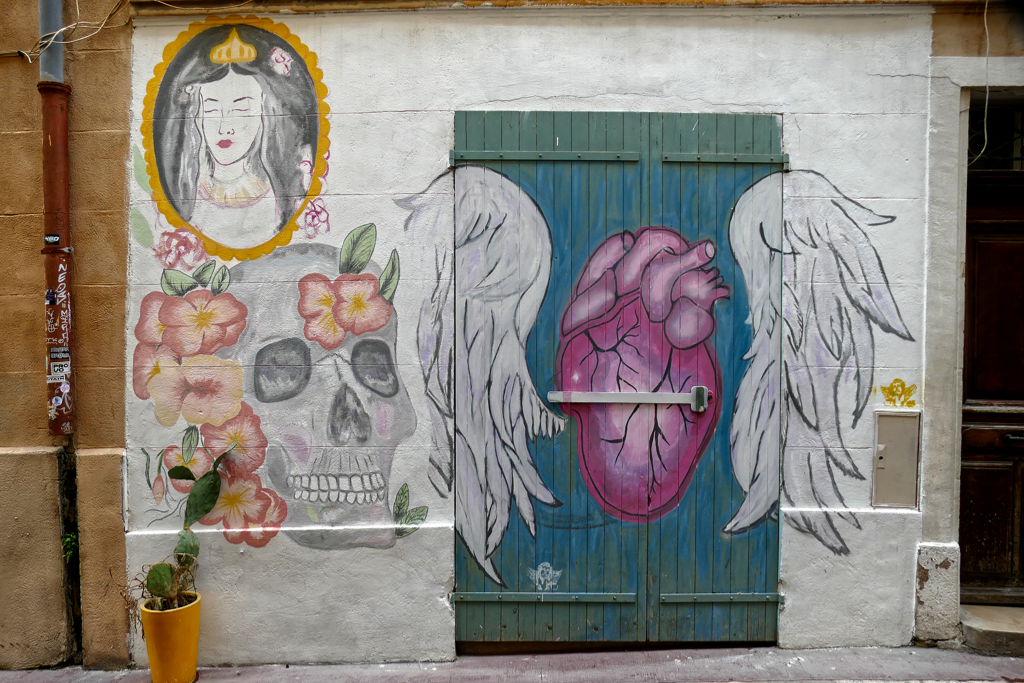
Regardless, the Panier district was rapidly falling into disrepair. Between 1960 and 1980, the population halved. The semi-abandoned, lawless area was an ideal hideout for criminal gangs. An influx of impoverished migrants followed the departure of established families.
Rising From the Ashes
Renovation work at Le Panier began in the 1970s and continued until the 1990s due to various obstacles. Since the 2000s, the neighborhood has become one of the most appealing districts, especially for tourists. They seek to experience the aura of a Mediterranean village in the middle of the big city – or whatever they assume a Mediterranean village should feel like.
Also, as sadly is the case basically everywhere, gentrification results in old residents being driven out by new prices.
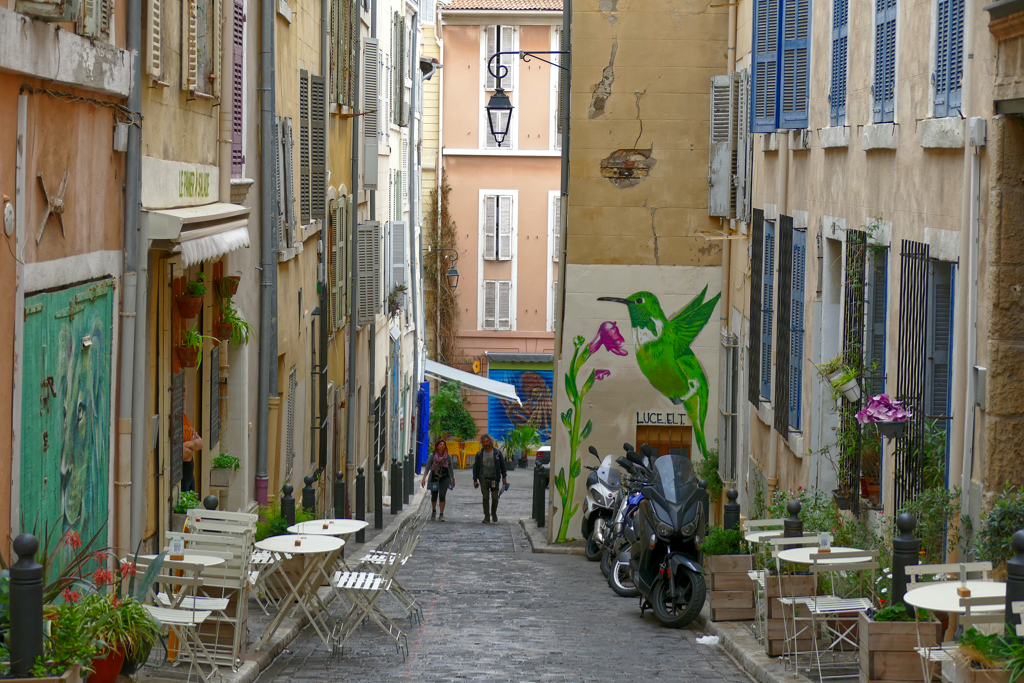
Ironically, one of the most famous sights in Le Panier is the Vieille Charité which was established as a hospice for the poor in the 17th century. In 1986 it was opened as a museum, research, and cultural center.

For me, the best thing is to simply walk through the cobbled streets and look for street art in the old brickwork. And I’ll find it on every corner. In fact, I find so much that it would go beyond a general post about Marseille. That’s why I listed all my amazing finds in the post The Best Street Art in Marseille.
Cours Julien
Another part of Marseille that has undergone a drastic transformation over the decades is the area around the Cours Julien, northeast of the Vieux Port.
In 1860 a fruit and vegetable market was established on Cours Julien. The wholesalers’ depots and cold rooms were located on the ground floors of the surrounding buildings. Together with the adjoining market on Place Jean Jaurès, it formed Marseille’s central market from 1908 onwards.
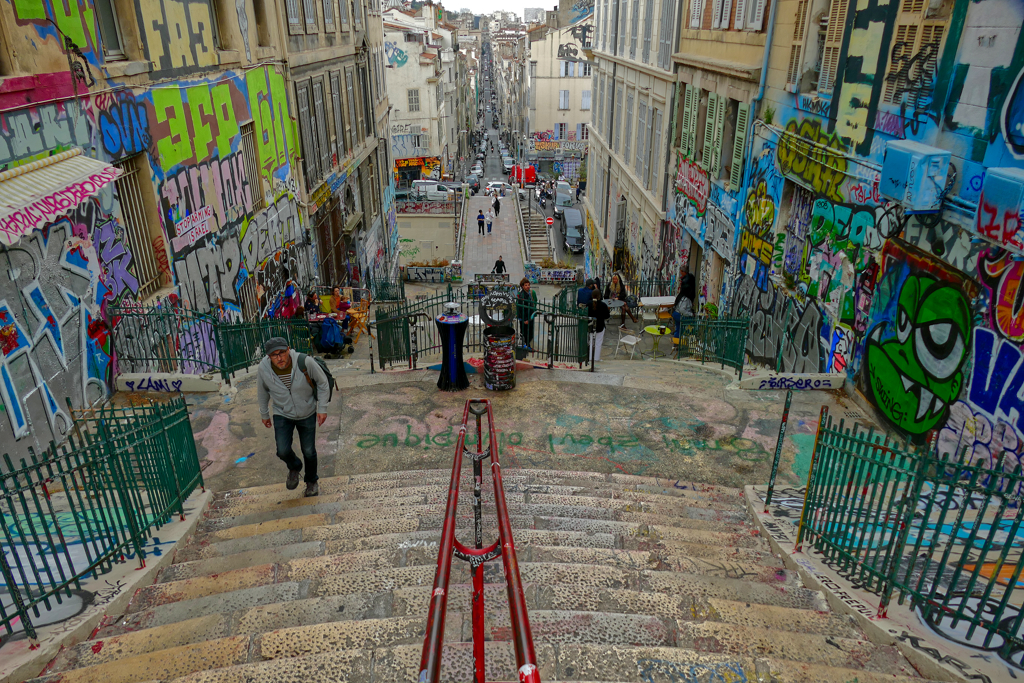
In the 1960s, however, the municipality decided to consolidate all fruit and vegetable sales in one single site. Therefore, the market was removed from Cours Julien in 1972.
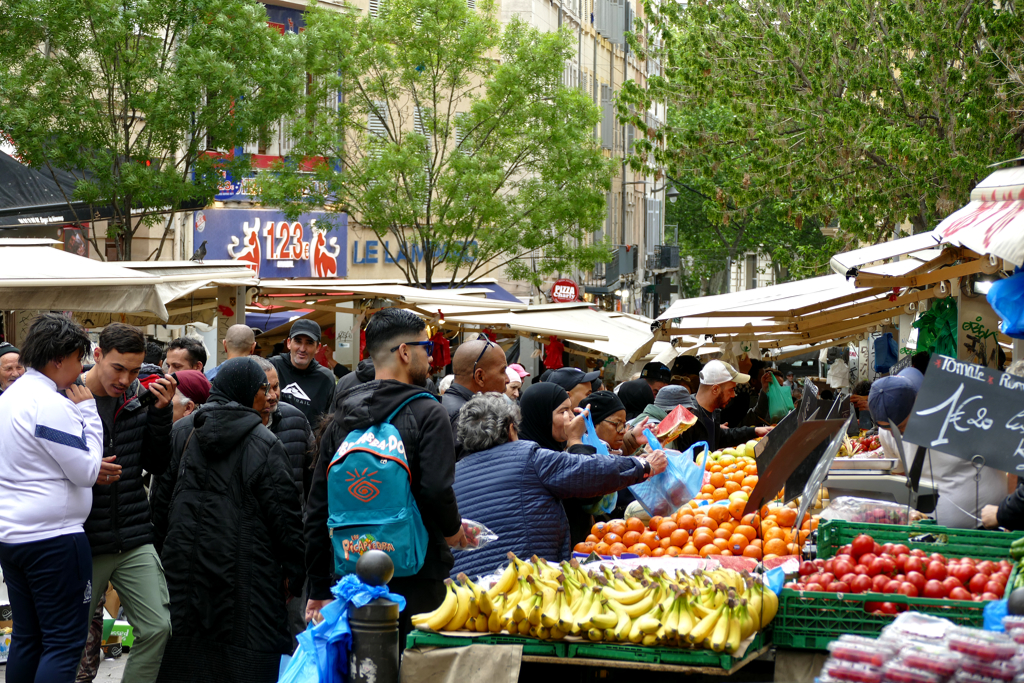
Eventually, the area was profoundly restructured. The upper part became a park which was inaugurated in 1980. Below, they constructed a multi-level car park as well as a station for the second metro line which opened in 1984. Renovation of the lower part then followed in 1988.

Wholesome Transformation
Hence, the entire neighborhood underwent profound changes. The former wholesalers’ premises were transformed into antique stores, reasonably priced restaurants, and into community and cultural centers. Today, Cours Julien is considered the district of artists and bohos.
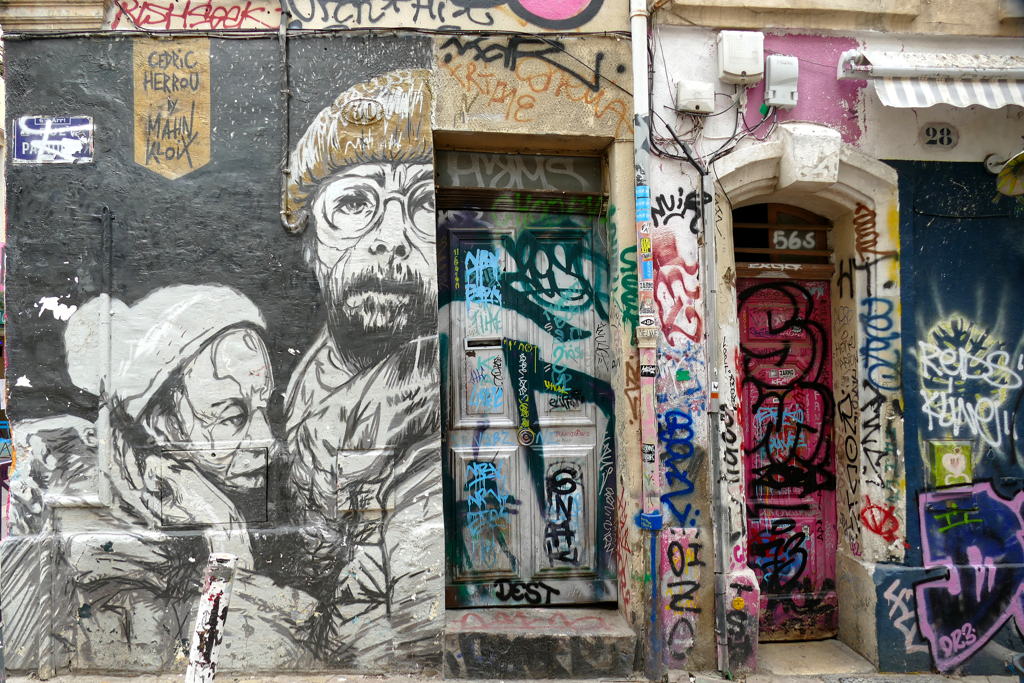
Although the Cours Julien has changed a lot over the years, its transformation has been less drastic for the residents than in Le Panier. Although the district has developed culturally, it remains tied to the underground and subculture. This means that prices don’t rise to the limit, and groups of tourists don’t stroll through the district like they’re in an amusement park.
Palais Longchamp
In fact, there are far fewer stately buildings in Marseille than in other major cities. The Palais Longchamp, however, is a glorious exception.
It was completed in 1869 in the historicist style and the complex consists of several parts.
Today the left wing houses the Museum of Fine Arts with paintings, drawings and sculptures from the 17th and 18th centuries. Founded in 1801, it is the oldest museum in Marseille.
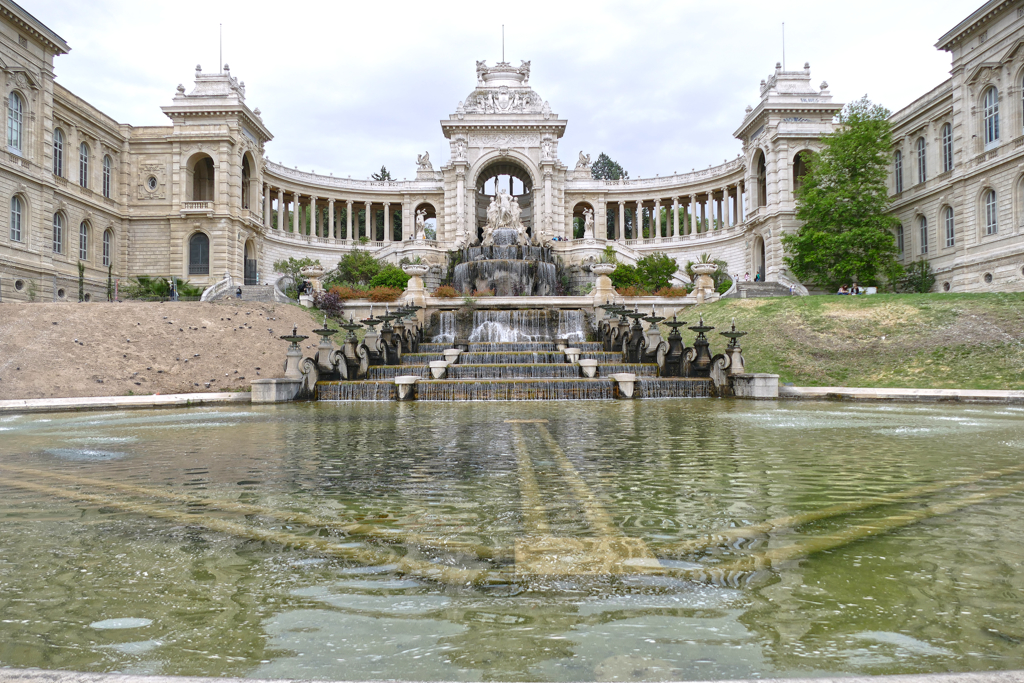
On the right, the Natural History Museum brings together several collections of curiosities from the 18th century donated by the city and the country. It was awarded the title of a first-class museum in 1967.
In front of the palace is a green area with an artificial waterfall and allegorical statues honoring water and fertility. Behind the palace there is a park with the Marseille Observatory, the botanical garden and the former zoo.
The King is Dead, Long Live the King Water!
No, the Palais Longchamp was not built for a nobleman. It’s a celebration of water. And this is how the story goes: In 1835, the city was heavily hit by a cholera epidemic due to a lack of fresh, clean water. After this tragedy, construction of the Canal de Marseille began in 1838 in order to supply the city with fresh water. For this purpose, an 85-kilometer-long canal was dug to bring water from the Durance River to the city. To celebrate the arrival of water, a representative water distributor should be built.
Unfortunately, the Revolution intervened in 1848.
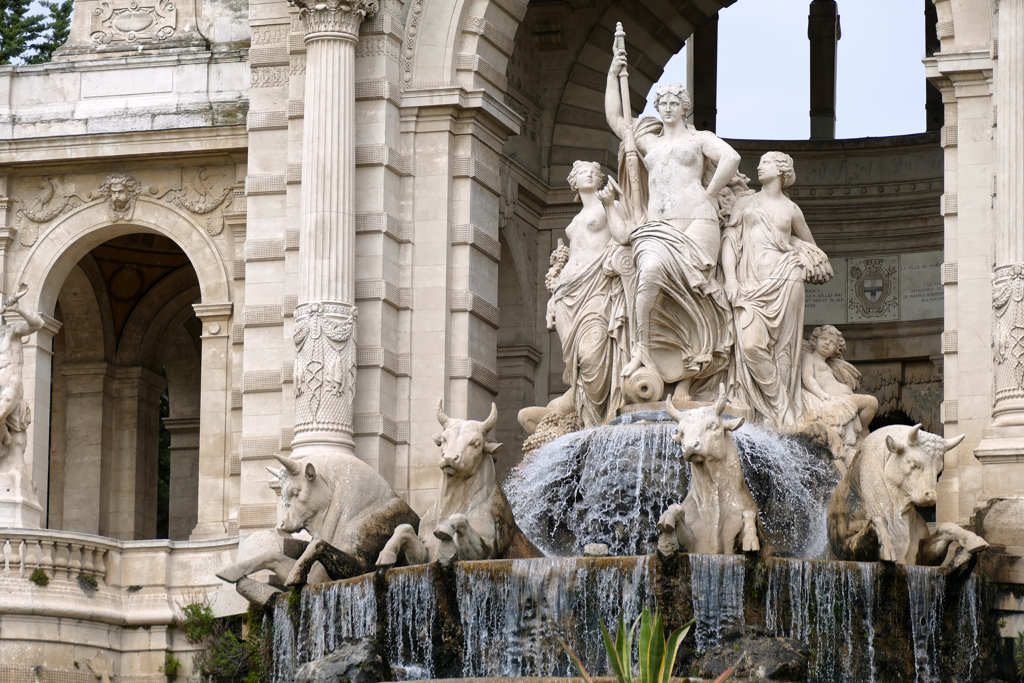
A new attempt was made in 1850, yet, it was not until 1859 that the sculptor Frédéric-Auguste Bartholdi began drawing up new plans. However, a commission rejected Bartholdi’s blueprints. He got his fee and was able to devote himself to other projects. For example, the creation of the Statue of Liberty, which France then offered to the USA as a small gift.
Meanwhile, back in Marseille, the architect Henri-Jacques Espérandieu from Nîmes was commissioned to design the complex that was finally built.
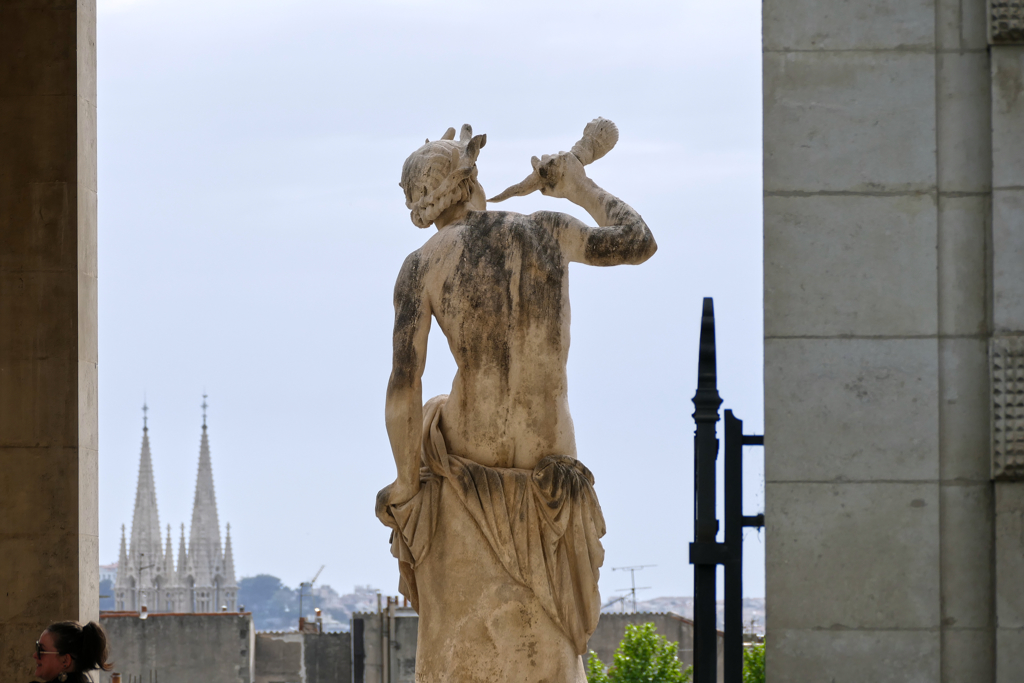
If you’re lucky enough to have more time to spend in Marseille, or unlucky that it’s raining, visiting the two museums housed in the side sections is absolutely worth your while.
The Musée des Beaux-Arts and the Muséum d’Histoire Natural are both open from Tuesday to Sunday from 9 to 6 and access to the permanent collection is free; only for the special exhibitions, you have to pay between 6 and 12 €uro.
Cité Radieuse
Another architectural gem stands around eight kilometers south of the Vieux Port. Although only die-hard architecture lovers will probably recognize the value of this complex, UNESCO added it to the list of World Heritage Sites in 2016.
The so-called Cité Radieuse is the creation of the Swiss architect Charles-Edouard Jeanneret, better known as Le Corbusier. The first of a series of five residential units, it was built between 1947 and 1952. Of course, the era of construction cannot be ignored when assessing. As a matter of fact, the 23 different types of a total of 337 apartments are exceptionally modern and comfortable for that period.
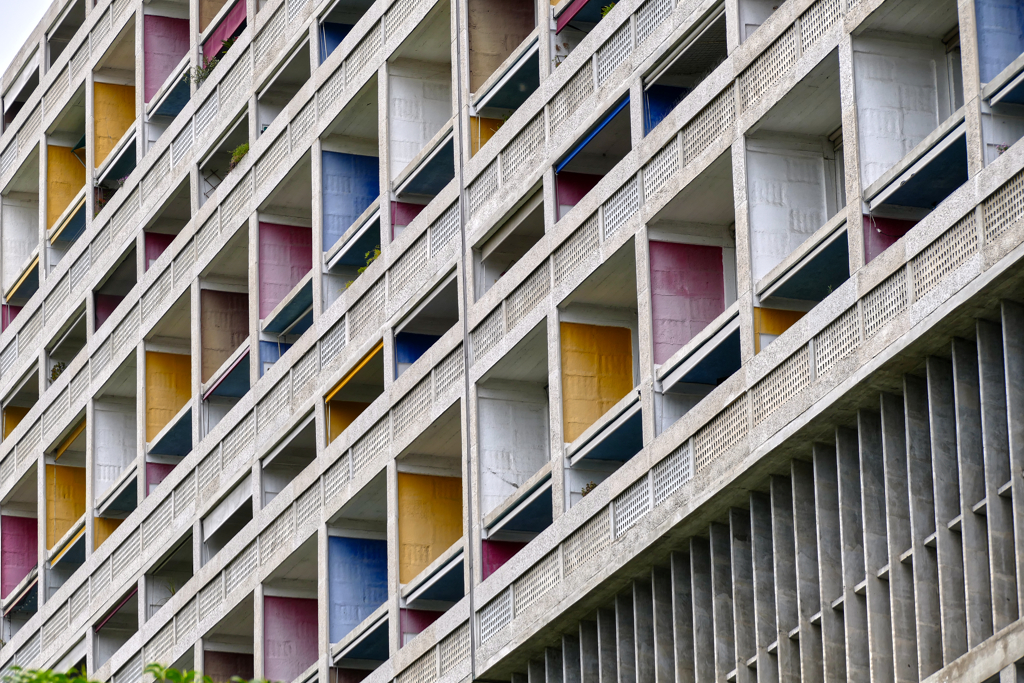
In addition to the individual units, numerous so-called extensions of private living spaces were designed in favor of a collective living experience. For example, there is an inner shopping street, a bookstore, a bar, a hotel, a kindergarten, and a gym.
On a guided tour, you get to see the shopping street, the roof terrace, and a listed apartment.
So, is it worth visiting the Cité Radieuse?
The Solomonic answer is: It depends.
Are you an architect or urban planner?
Are you visiting with a knowledgeable guide?
Do you want to cross another World Heritage Site off your list?
Then yes.
Are you expecting a building that will blow you away at first sight?
Didn’t you even know that there was a Le Corbusier?
Then no.
Corniche Président John Fitzgerald Kennedy
As impressive as the building designed by Le Corbusier may be, after the visit I somehow needed something more maritime, leisurely, in short Mediterranean.
Luckily, there are around 20 beaches alongside Marseille’s coastline. They are made of sand or small pebbles and some of them are artificial. In general, they are all very well maintained and safe. Especially if you are lucky enough to be in Marseille for several days and the weather permits, you should definitely spend a day on the coast. By the way, the city of Marseille asks you to use public transport or bicycles to get around, especially in the Calanques.
There is a regular bus connection to Calanques from the Rond Point du Prado.

But even if the beautiful Massif des Calanques is too far for you, you can still enjoy Mediterranean summer delights during your stay in Marseille. The closest beach to the center is Plage des Catalans. Of course, you cannot expect a secluded tropical beach like in a rum commercial. But it’s definitely suitable for a few hours of sunbathing.
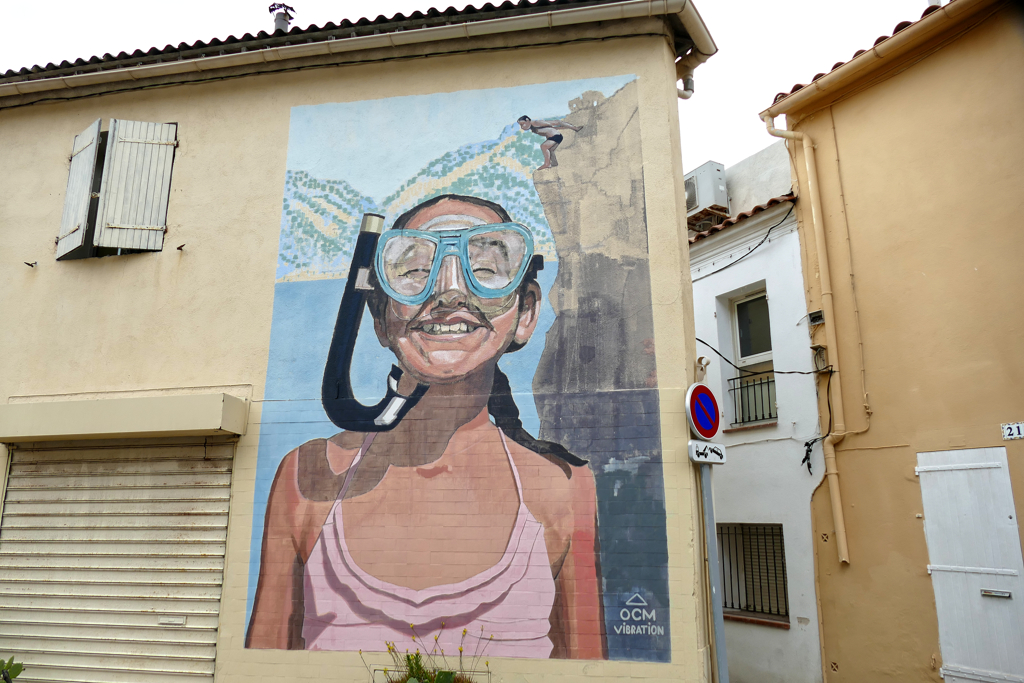
This is also where the so-called Corniche Kennedy begins. The Corniche was opened in 1863 as a narrow coastal path. Between 1954 and 1968, the street was continually broadened to create a panoramic boulevard. It’s questionable whether the Corniche has become more picturesque through this transformation. Nevertheless, the road has been closed to cars on one Sunday per month since 2021.
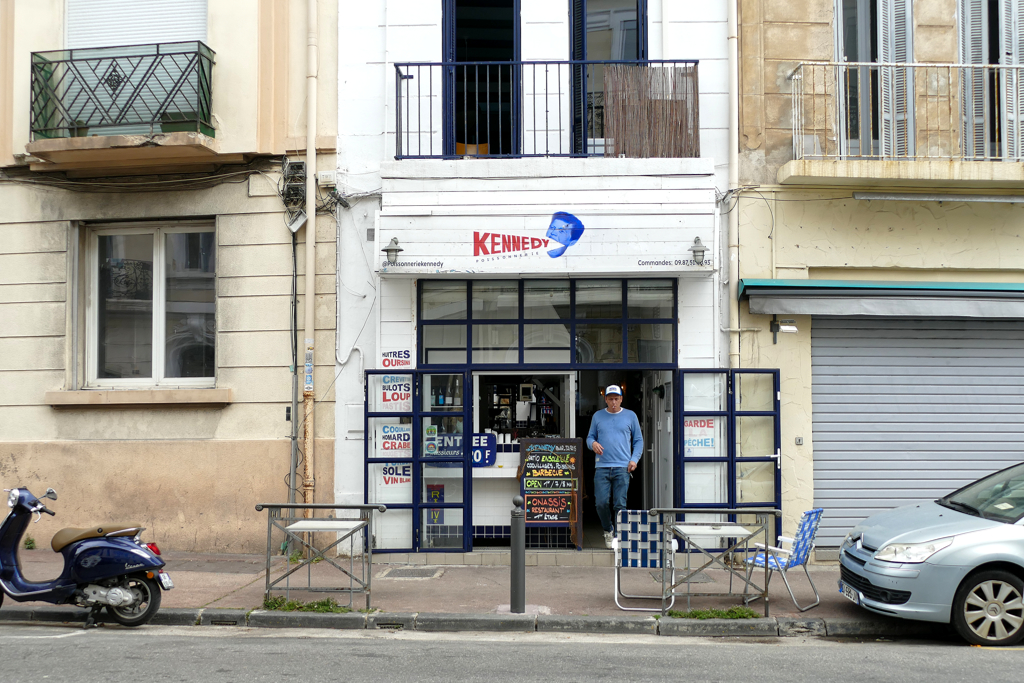
To this day, you can see fishing houses as well as stately mansions from the 19th century along the Corniche. There are hotels, restaurants, bars, and, of course, many small cozy beaches.
Actually, it’s very easy to squeeze in a few hours of summer vacation while visiting Marseille.
Practical Information
How to Get There
By Plane
Marseille-Provence Airport is located about 25 km north of the city center in the municipality of Marignane.

As a matter of fact, I hardly know of any other city from which you can get to the airport so frequently, easily, and quickly. Between 5.30 a.m. and around 1 a.m., bus #91 runs back and forth between Saint Charles Central Station and the airport. For 10 €uros, the coach will take you to the airport in less than half an hour – every incredible ten minutes! During the off-peak hours, it goes less frequently, obviously.
Regardless, anyone who still spends money on a cab probably just wants to diminish the size of their gold mine. I can’t think of any other reason not to take the bus.
By Train
The train is an excellent means of transport to get to Marseille. Since the Gare Saint Charles is in the city center, you are immediately in the heart of the city.
Since 2001, the TGV Méditerranée line has connected Paris with Marseille and the journey takes just 3 hours. It is 1.5 hours to Lyon and 4.5 hours to Lille. This means that the journey from London to Lille with the Eurostar and then with the TGV to Marseille can easily be managed in one day.
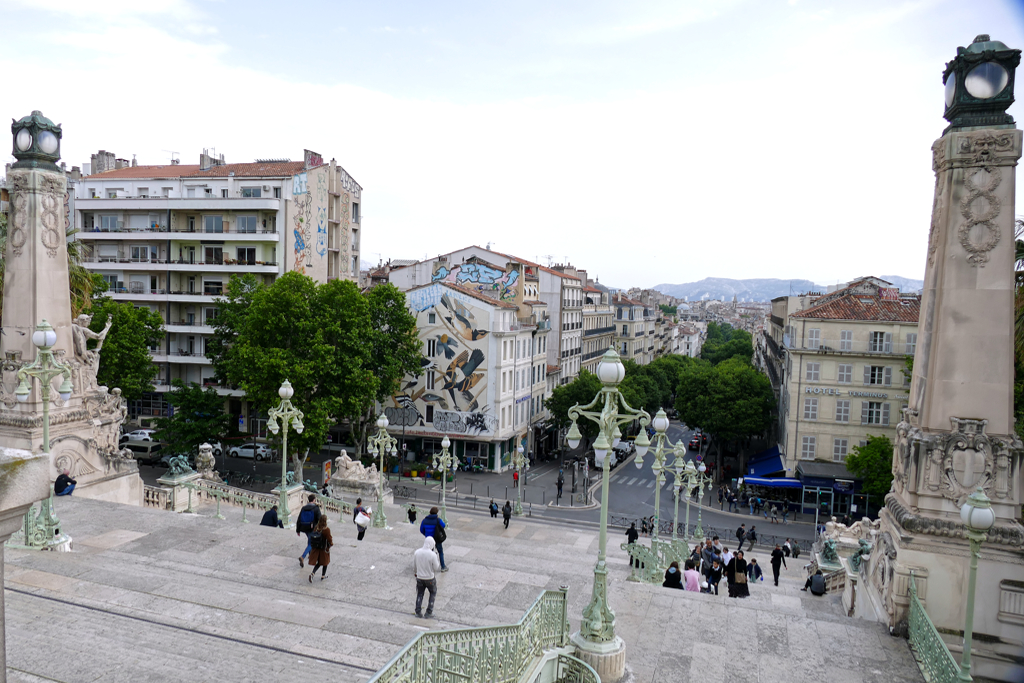
The train station is directly connected to Marseille’s two metro lines and to the bus station.
In case you want to explore the city right away, you can leave your luggage at a very reasonable price with the good people of Bagmobile on the southern side of the station building. They are open every day of the year from 8.15 a.m. to 9 p.m.
You should avoid taking a cab directly from the train station as the prices are prohibitive.
Not Your Fool
While we’re at it: Since I had problems with my ankle, I wanted to take a cab the short distance from the hotel to the train station. The receptionist offered to call me one. Sure enough, minutes later, a young man in a smart suit stood in front of me and gallantly took my bag. I hobbled after him to the front of the hotel. There a sleek car was waiting for me with no sign of a being a registered cab.
“Are you a taxi driver,” was my legitimate question.
“We are a driving service,” the young man replied.
“How much does the trip to the train station cost?” was my next legitimate question.
“35 €uro”
“35 €uro?” was my now incredulous question.
With a slightly bitter “Merci”, I took my bag from the young man’s hand, put it on as a backpack, and hobbled the two kilometers to Saint Charles train station in under half an hour.
No, you smart young man, I won’t pay 35 €uro for a two-kilometer ride.
Moral of the story: Take care of your cab yourself instead of having reception call it!
By Bus
Travelling by long-distance bus is getting really popular in Europe and in the Provence region, it can actually be much faster to take a long-distance bus than the train.
There are excellent bus connections between Marseille and the cities along the Cote d’Azur such as Nice and Cannes. The journey by bus takes about the same time as by train, but only costs a fraction.
However, there are also direct buses to Paris. In contrast to a train ride of a bit over three hours, the bus takes over nine hours and tickets normally start at 40 €uros which is about half of the price you pay for a train ticket.
Marseille’s bus terminal, in French Gare Routière, is right on the backside of the train station Saint Charles. This way you can compare the best connections and prices between buses and trains directly on-site, provided you allow some time.
How to Get Around
Marseille is a large and very spread out city so you won’t be able to explore it just by walking. Fortunately, the city has a great system of public transportation.

Tickets in Marseille are contactless cardboard cards that you have to hold against a reader on the trains or buses. Once validated, the ticket is good for a 60-minute ride. If your trip includes a connection, you must tap your ticket again. However, you won’t be charged again if that’s within the 60-minute slot.
If you buy a ticket from the driver, it will cost you 2 €uros while from the machine, it costs only 1.70 €uros. These tickets can be recharged at vending machines in metro stations, tram stops as well as at some retailers.
Various passes save you some money like for instance a 10-trip card for 15 €uros. An even better deal is the passes for unlimited rides. For 24 hours, you pay 5.20 €uros, for 72 hours 10.80 €uros, and a 7-day pass sets you back only 15.50 €uros.
You can easily check all your connections on Google Maps. Just type from where to where you need to go and the App will show you the fastest and most convenient way to get there.
Cycling
As in all major European cities, Marseille also has a city bike system called levélo where you can rent E-bikes at a modest price. However, I have only heard bad things and therefore do not recommend it. While cycling along the Corniche on a quiet Sunday can be a wonderful experience, cycling in the city center is not very convenient. Marseille is quite hilly, there are a lot of cobblestone streets and, last but not least, the tram tracks are a source of accidents. However, if you want to try it out, you’ll find all the relevant info also in English on their website.
Where to Stay
Although Marseille is not as crazy expensive as Paris, accommodation is not exactly cheap. Like everywhere else, this easy equation applies: Of the three aspects of a good standard, convenient location, and affordable price, you always have to waive one. If you find a good standard hotel in a convenient location, it won’t be at an affordable price. A hotel in a convenient location at an affordable price won’t have a good standard. And finally, a good hotel at an affordable price won’t be in a convenient location.
Booking.comI opted for the last option which brought me to the neighborhood of Chartreux just north of the very city center.
What a difference in price three subway stops made: At the Appart’hôtel Odalys Le Dôme**, I had a squeaky clean room on the 10th floor and a métro station just around the corner. Also, there are tons of small bakeries, convenience stores, and eateries in this residential part of the city. If you’re up for it, you can walk from there to the Palais Longchamp as well as the city center in about twenty minutes.
In case they are booked out or if you simply prefer a different kind of accommodation, you can choose suitable lodging options in Marseille on this map*:
What to Eat
French cuisine is famous all over the world for a reason. In fact, food is an important part of daily life in France and regional cuisines and customs are a cherished part of the national culture. UNESCO recognized France’s efforts and designated the country’s national cuisine as an intangible cultural heritage in 2010.
French cuisine is famous for its sophistication and versatility and, most importantly, the high quality of the ingredients used. Of course, each region has its own specialties, but they are often popular throughout the country. The most famous dishes come from Normandy, Brittany, Burgundy, and the Provence region, obviously.
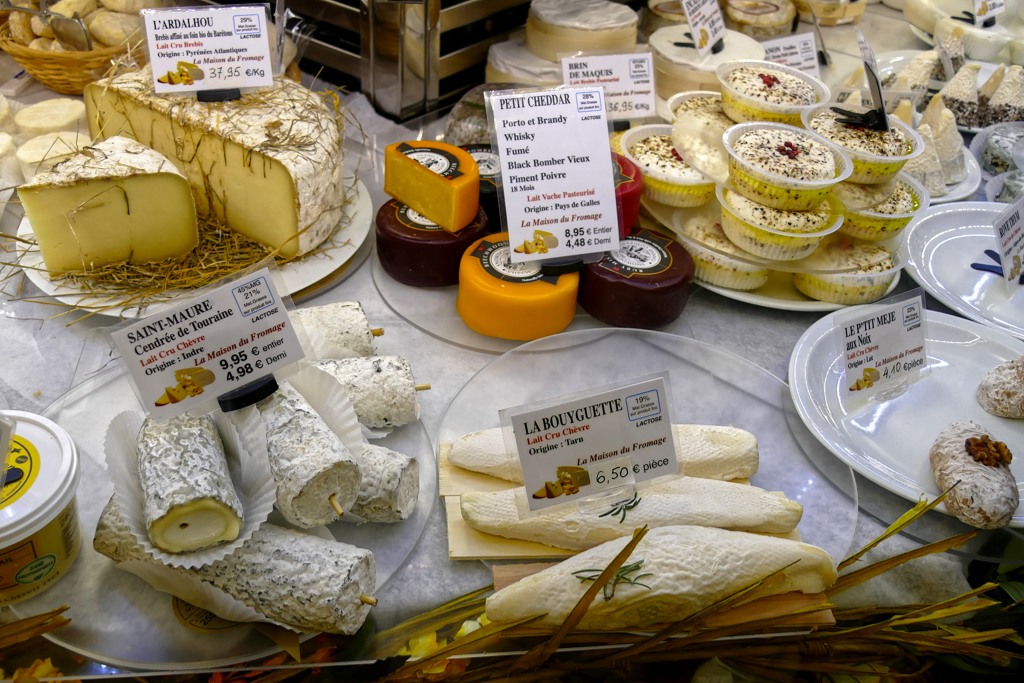
In addition to delicious wine and crispy baked goods, more than 700 types of cheese are particularly noteworthy! In fact, the French don’t just slap cheese on a sandwich. They also use it a lot for cooking, gratinating, or as a filling.
Unfortunately, food in France is not cheap. Delicious snacks at reasonable prices are often available in bakeries and rotisseries as well as in eateries at farmers’ markets and in covered market halls. In general, lunch menus and daily specials, so-called plat du jour, are comparatively reasonably priced.
What’s Special?
In traditional Marseille cuisine, the food is fresh and uses local ingredients with lots of fish and seafood. However, meat and poultry are also often prepared.
Les pieds et paquets refers to rumen from sheep or lamb that is stuffed with bacon, garlic, and parsley. Pied-de-mouton or sheep’s feet are the other half of this quite special dish.
Hey, what’s that face? Do you think I called Marseille the belly of France for no particular reason?
However, if the above-mentioned delicacies are too exotic for you, you can always gorge yourself on Bouillabaisse. Although it is a Marseille classic, it is beloved throughout France and beyond. Originally, fishermen prepared the soup from unsold fish, prawns, and mussels. But don’t worry, today, all ingredients are fresh and simply delicious.
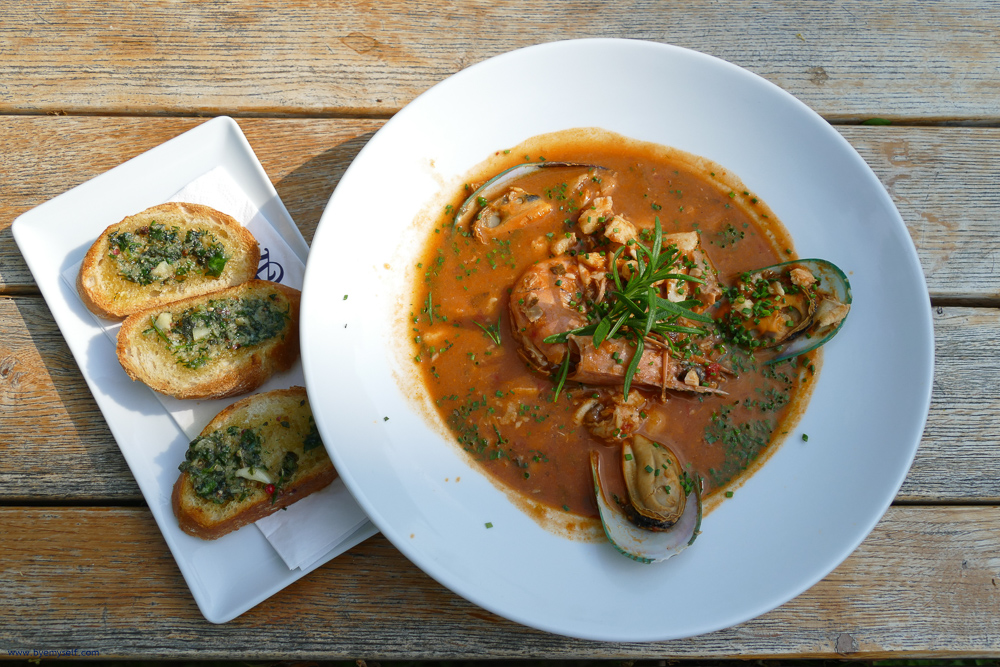
In addition to the traditional Provençal cookery, there are also many influences from the entire Mediterranean region due to the large proportion of immigrants, obviously. Today, you’ll find dishes inspired by Levantine, Maghrebi, Greek, Italian, Corsican, Spanish, Jewish-Sephardic, and Armenian cuisines.
Cash, Cards, and Deals
Since 2001, 20 European countries have paid with €uros, and France is one of them, obviously. The exchange rate is 1 US$ = 0,94 EUR as of June 2024, but you can check the conversion on this page.
Also, you can pay with credit cards basically everywhere.
There is a lot to see in Marseille, and although it’s not the country’s most expensive city, entrance fees can quickly add up.
You can save quite a bit of money with the Marseille CityPass*, as it grants you free entry to the city’s main attractions and museums. It also includes free use of public transport, a touristic bus tour or a boat tour to the island of If as well as a ride on the so-called Petit Train to Notre-Dame de la Garde.
The pass comes in three versions and can also be comfortably ordered online*:
| 24 hours | 48 hours | 72 hours |
| 29 €uros | 39 €uros | 47 €uros |
Visiting Organized
Although I’m an avid solo-travelling woman, I sometimes like to join organized tours. This way, I get extended info about a place and it’s fun to visit landmarks in the company of like-minded fellow travellers.
Especially in summer, Marseille can get quite busy. Therefore, booking tickets’n’tour ahead is certainly a good idea*:
Connection and Communication
Since June 2017, no roaming charges have been applied within the EU with a European mobile phone contract, This applies in all 27 countries of the European Union as well as in Iceland, Liechtenstein, and Norway and to all contracts.
In case European roaming is unavailable, you can connect to the internet without any issue at basically every museum, eatery, café, and, of course, hotel.
If you insist on being online 24/7, you can get a SIM card, obviously. There are prepaid SIM cards by many companies. At 2.99 €uros, Orange France distributes the cheapest one. Other brands are SFR France, Bouygues Telecom, and Free Mobile. They cost 10 €uros. Keep in mind that some companies might also charge an activation fee.
In France, they use plug types C and E. Their voltage is 230 V and the frequency 50 Hz. Whereby, as nowadays, all these chargers have integrated adapters, in general, the voltage and frequency don’t really matter.
By the way, you’ll find this information and many more comprehensive travel tips in my post World’s Most Complete Travel Information – an indispensable globetrotter-classic.
Language
The French are famous for many great things. Presumably, speaking foreign languages is not one of those.

While in über-touristy Paris, things seem to get a bit better, in the Provence region, people have rudimentary knowledge of English at most. And while they still might understand more or less what you are saying, they might not be able or willing to answer in English. Therefore, already out of respect, it won’t hurt to learn at least some polite phrases with the help of babbel or Lingohut, for example.
Map
This map should help you to find all the wonderful places I’m introducing in this post. Clicking on the slider symbol at the top left or the full-screen icon at the top right will display the whole map including the legend:
Marseille was the grand finale of my circle trip through the Provence. To read about the other four cities I visited, go to the post France – An Easy Circle Trip to the Five Best Cities to Visit in Provence and take your pick! There, you’ll also find further valuable general information that will make your own trip much smoother and more enjoyable.
Pinnable Pictures
If you choose to pin this post for later, please use one of these pictures:
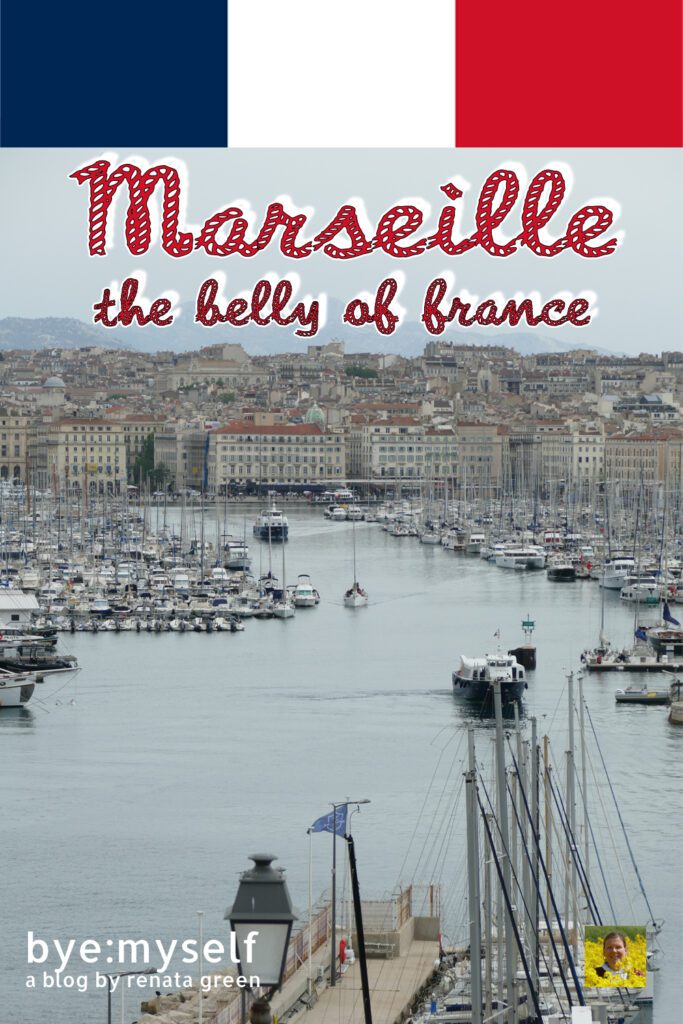
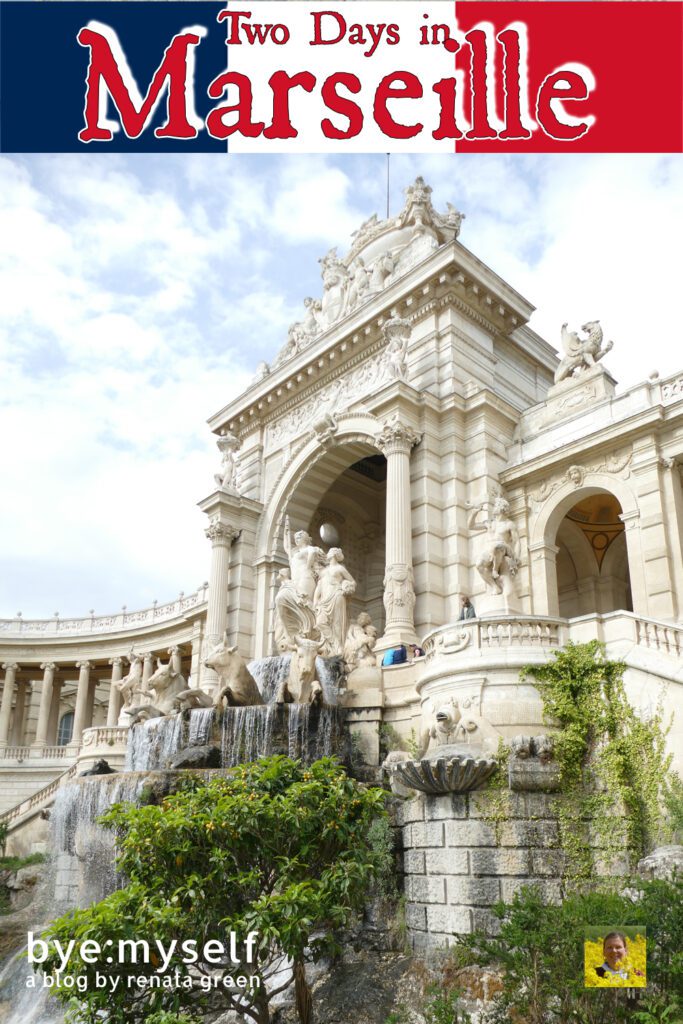


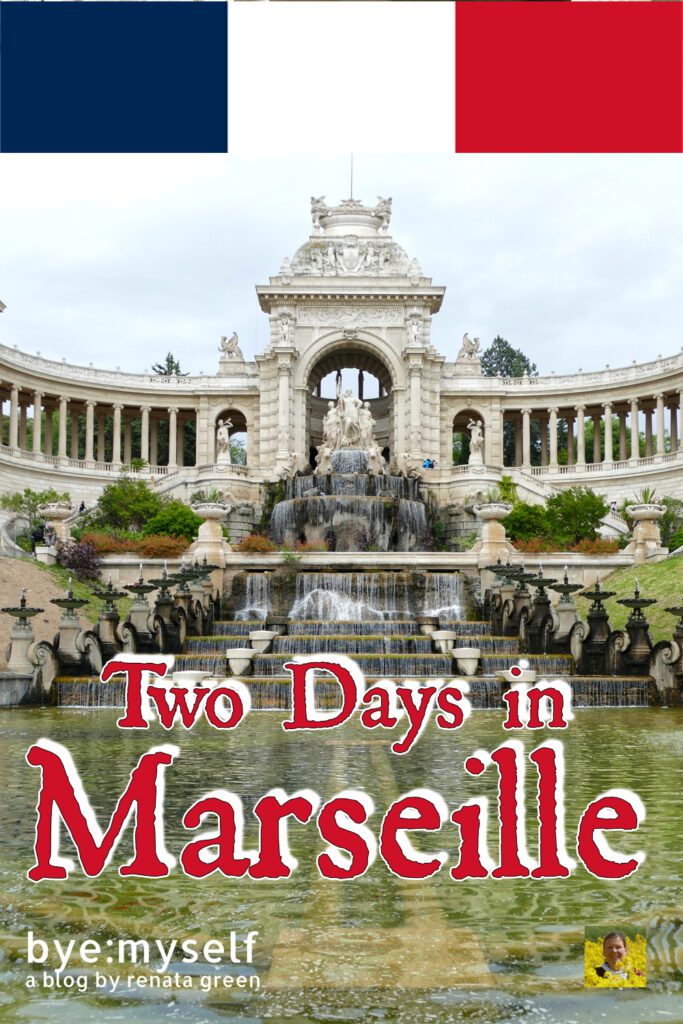

Did You Enjoy This Post? Then You Might Like Also These:
Best Places to Visit in Basse Terre, the Western Wing of GUADELOUPE (also by public bus)
PARIS Museum Pass: Skip the Lines And See It All For Less
One Day in ARLES – What Not to Miss in Vincent’s Picture-Perfect City
10 Most Beautiful Palaces in the Marais Neighborhood of Paris
24 hours in PARIS
MAGNIFICENT MARTINIQUE: Ten Places Not to Miss on Your Visit (even when exploring by public bus)
Best Things to Do in AIX-EN-PROVENCE in One Day
Two Days in MARSEILLE – What Not to Miss in the Belly of France
* I am very appreciative that Office de Tourisme et des Congrès de Marseille supplied me with a complimentary Marseille CityPass. Nevertheless, the description of these activities and all opinions on their services are mine and were in no way influenced by my cooperation partner.
** This is an affiliate link. Hence, If you book through this page, not only do you get the best deal. I also get a small commission that helps me run this blog. Thank you so much for supporting me!
